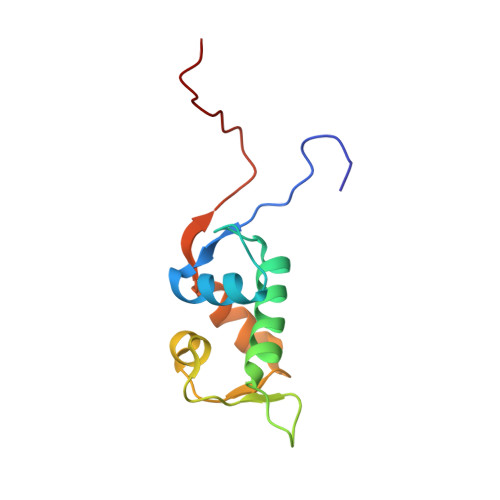NMR structure of a complex between MDM2 and a small molecule inhibitor.
Fry, D.C., Emerson, S.D., Palme, S., Vu, B.T., Liu, C.M., Podlaski, F.(2004) J Biomol NMR 30: 163-173
- PubMed: 15557803
- DOI: https://doi.org/10.1023/B:JNMR.0000048856.84603.9b
- Primary Citation of Related Structures:
1TTV - PubMed Abstract:
MDM2 is a regulator of cell growth processes that acts by binding to the tumor suppressor protein p53 and ultimately restraining its activity. While inactivation of p53 by mutation is commonly observed in human cancers, a substantial percentage of tumors express wild type p53. In many of these cases, MDM2 is overexpressed, and it is believed that suppression of MDM2 activity could yield therapeutic benefits. Therefore, we have been focusing on the p53-MDM2 interaction as the basis of a drug discovery program and have been able to develop a series of small molecule inhibitors. We herein report a high resolution NMR structure of a complex between the p53-binding domain of MDM2 and one of these inhibitors. The form of MDM2 utilized was an engineered hybrid between the human and Xenopus sequences, which provided a favorable combination of relevancy and stability. The inhibitor is found to bind in the same site as does a highly potent peptide fragment of p53. The inhibitor is able to successfully mimic the peptide by duplicating interactions in three subpockets normally made by amino acid sidechains, and by utilizing a scaffold that presents substituents with rigidity and spatial orientation comparable to that provided by the alpha helical backbone of the peptide. The structure also suggests opportunities for modifying the inhibitor to increase its potency.
Organizational Affiliation:
Roche Research Center, Hoffmann-La Roche, Inc. 340 Kingsland Street, Nutley, NJ 07110, USA. david.fry@roche.com















